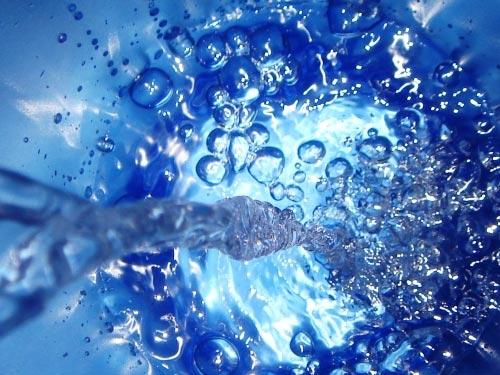We live on a planet that is dominated by water. More than 70% of the Earth’s surface is covered with this simple molecule. Scientists estimate that the hydrosphere contains about 1.36 billion cubic kilometers of this substance mostly in the form of a liquid (water) that occupies topographic depressions on the Earth. The second most common form of the water molecule on our planet is ice. If all our planet’s ice melted, sea level would rise by about 70 meters.
Water is also essential for life. Water is the major constituent of almost all life forms. Most animals and plants contain more than 60% water by volume. Without water, life would probably never have developed on our planet.
Water has a very simple atomic structure. This structure consists of two hydrogen atoms bonded to one oxygen atom (Figure 1). The nature of the atomic structure of water causes its molecules to have unique electrochemical properties. Due to the way in which the hydrogen atoms are attached to the oxygen atom, the hydrogen side of the water molecule has a slight positive charge. On the other side of the molecule a negative charge exists. This molecular polarity causes water to be a powerful solvent and is responsible for its strong surface tension. Read more


